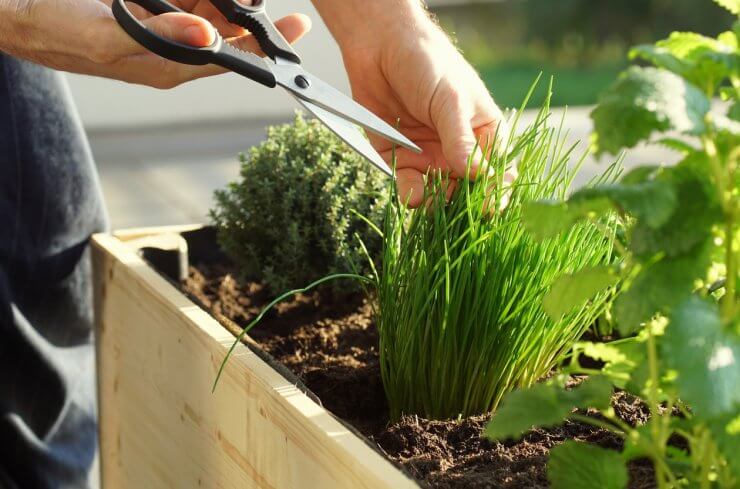
Harvesting chives
You can start harvesting chive leaves once they’re about 5 to 6 inches high. Just cut the leaves, and leave a few inches behind if you want them to regrow. If you’re using them fresh, give them a rinse, and either blot them dry to use whole, or grab your herb scissors to chop them up.
The flowers of your chive plants are edible, too, but here’s the thing: once your chive plants have flowered, you are probably pretty much done harvesting the leaves. The plants will have transferred more energy to the flowers, and that will decrease the flavor of the leaves. So it’s a bit of a balancing act through the season. Don’t be shy about clipping fresh leaves for your recipes—the plant will put out new growth.
A note on harvest timing
If you’re growing your chives outdoors in open land or in raised beds, take note that once your chives flower, those flowers are going to drop seeds. That means next year, you’re likely to have even more chives. If you’re good with that, let the flowers go to seed. If you don’t want your chives spreading, then clip the flowers as soon as they bloom, and use them as a garnish for vegetable dishes and as a component in salads.
Either way, if you’re growing chives outside and plan to leave them outside to overwinter, stop harvesting the leaves in late August. You want to give the plant time to marshal its resources to settle in for the winter. As fall approaches, cut them back to about 2 inches high, and cover them with mulch to protect them from frost. If you’re bringing them inside for the summer, you’ll be able to harvest pretty much through to the next spring.


 Previous
Previous

